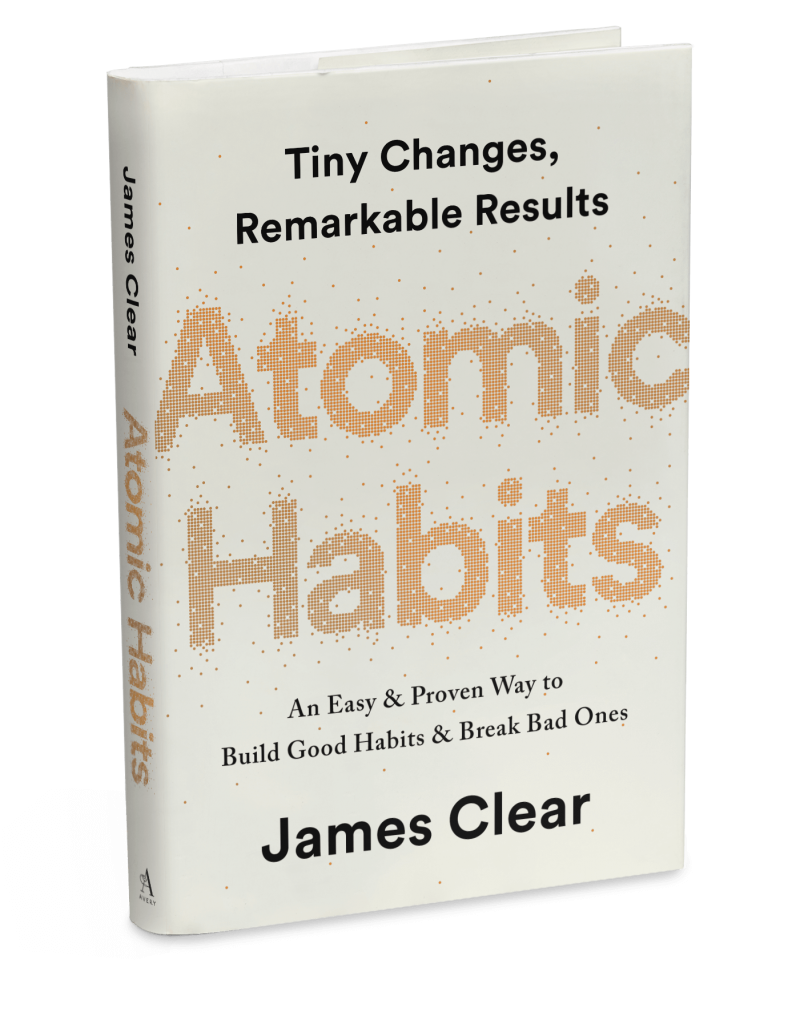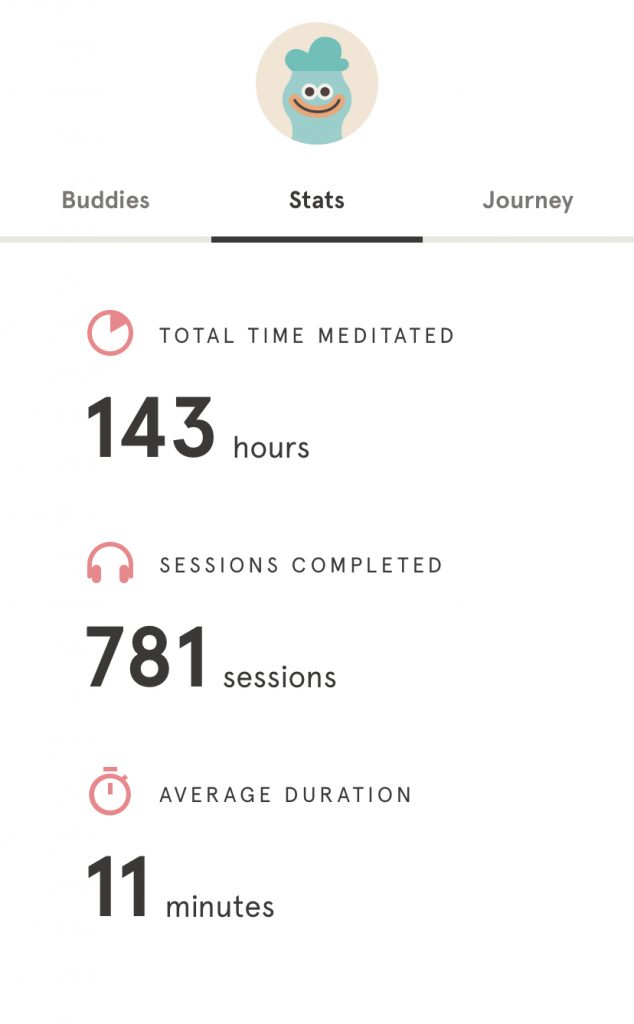

I used to hate routine and habits.
Routine meant that I had to do the same things day after day after day, and it all revolved around work. I’d:
- Get-up
- Get ready for work
- Drive to work
- Work for 9-10 hours
- Drive home (while being tired and hangry)
- Make dinner
- Relax from work
- Go to bed
- Get up and do it all over again…
Within this context, habits were things I’d try to insert into this crazy schedule to make life more bearable. Adding a meditation habit meant I had to get up even earlier. Adding a workout habit meant that I needed to go to the gym in my office building after work. I know it was beneficial. But, by the time I got home, I’d also be hangry. It would take too much time and effort to make dinner, so I’d just order out.
Inserting a beneficial habit (exercise) often meant that I was straying from another (saving money by eating dinner at home). Sure, maybe I could create a new habit of cutting and prepping vegetables on the weekend to support my habit of eating dinner at home. But, it all felt like too much.
Building new habits simply felt like another thing making unrealistic demands on my time.
Eventually, I took more control over my schedule. The way that I did that though was not by creating new habits. It was by eliminating the things that didn’t serve me, that I didn’t want to do, or that drained my energy. I call this self-care by elimination.
Why do we always think we need to add something (a workout, a healthy meal, a massage, a bath, etc.) to care for ourselves? Shouldn’t we get rid of what’s causing us to feel like we need self-care in the first place (if we can, of course)?
Once I radically shifted how I was spending my time, I started to see the real benefits of routine and habits.
Habits were no longer about trying to make something that was miserable slightly more bearable. Instead, they were about organizing a life that was generally pretty good, so that it could be even better, more fun, more spacious, and more creative.
It was in this context that I decided to read Atomic Habits. The book reinforced a lot of the things that I was already experiencing and gave me some new ideas to explore.


And, I saw so many helpful intersections between lifestyle design, personal finance, and habits!
I learned so many valuable pieces of insight from Atomic Habits, so I want to share the most important things that I learned.
What are Habits?
First, it would be helpful to define habits.
“Habits are the small decisions you make and actions you perform every day.” – James Clear
When I read this, I was surprised that it was so broad. I assumed that habits were specific things related to self-care that we needed to try to insert into our lives. In reality, habits include anything that we repeatedly do.
I was surprised by how similar it was to how I define lifestyle.
Your lifestyle is the sum total of your decisions for how you habitually spend your life’s currency: time, energy, and money.
James clear says that your life is a sum of your habits. This jives with my definition of lifestyle design.
So, if I look back to the previous routine that I hated, those were actually habits. They were the small decisions I made and the actions I took every day. I just didn’t like those habits and they weren’t serving me.
Why Are Habits Important?
After learning to see habits in a much broader way, it was a lot easier to see the importance of habits – both positive and negative.
Habits are valuable because:
- Small changes over time can make a huge difference
- The focus is as much on the process as on the destination/goal
- They shape our identities
- They reduce our cognitive load and free up mental capacity
Habits Can Make a Huge Difference Over Time
I love this quote from the book, “Changes that seem small and unimportant at first will compound into remarkable results if you are willing to stick with them for years.”
The first thing I’ll say is that we need to make sure that the habits are positive and contributing to our lives. Otherwise, the habits will add up over time and make our lives worse (like my story above).
There are so many examples of marginal gains. For example, think of someone who starts to invest even $20/paycheck at the age of 21. Not only will every dollar be with 7x as much in 40 years, but they will also begin building good investing habits. As they increase their income, they’ll be more likely to increase their savings and investments. They have already built the habit.
In the context of lifestyle design, I think about the aggregation of marginal gains in a few areas. For example, if someone is unhappy with their life and wants to make significant changes, I encourage them to build 3 simple habits:
- Mindfulness through journaling, meditation, yoga, etc.
- Rediscovering joy by doing things for no other reason besides having fun.
- Eliminating things that make you unhappy and drain your energy.
These three habits become a virtuous cycle over time. They compound. When you are mindful of what makes you unhappy, you can eliminate it. Once you eliminate it, you have more space to take actions that will bring you joy. When you are mindful that something brings you joy, you’ll make time to do it more often.
Eventually, enough small changes will bring you to a “breakthrough moment.” As James Clear says, these breakthrough moments are “the result of many previous actions which build up the potential required to unleash major change.”
Habits Focus on the Process Instead of the Outcome
Of course, we all want to get results. Even more importantly, we want to enjoy the process. Otherwise, it’ll be really hard to stick with our habits!
I love what James Clear says about this, “When you fall in love with the process rather than the product, you don’t have to wait to give yourself permission to be happy. You can be satisfied anytime your system is running.”
When I’m setting goals and thinking about my vision for the future, it’s incredibly important for me to consider whether I will enjoy the process. If I won’t, then it’s time to choose a new goal.
This is the same reason why we talk so much about the journey to financial independence. To us, FI isn’t only about the end goal of achieving FI, so that we can ride off into the sunset. In fact, it often doesn’t work that way.
To enjoy our pre- and post-FI life, we need to experiment, learn, build habits, try projects, and do things we love. If we don’t build toward the life we want all along the way we won’t know what we want when we “arrive.”
Just as with financial independence, the process of meeting any goal (i.e. the habits) should be just as remarkable as the destination.
Habits Shape our Identities
Besides learning a lot about what we want, our habits help us to identify who we truly are and who we are becoming.
To be honest, I was quite frustrated about the example that James Clear used in the book. He shared an example of a woman who lost 100 pounds by asking, “What would a healthy person do?” Health is such a subjective concept, and weight is, in fact, not a great measure of health.
That being said, I thought the idea had merit.
I want to be someone who truly loves myself. I want to do things that are good for me and support my overall health and well-being. But, I want to do them because I love myself (not because I want to punish myself or fit into the mold of what society tells me I should do).
So, I started asking myself on a daily basis this simple question: “What would a person who has radical self-love do today?”
Taking repeated action helps us to build our identity. Once we build this identity, it becomes easier and easier to behave in alignment with who we are.
I imagine that this has led me to do somewhat similar activities to the person in the book’s example. But because I’m am now doing it for a different reason, the process feels different. I’m becoming someone who does kind things for myself because I inherently deserve to feel good.
There are so many limiting beliefs (such as I’m not ______ enough; I’m too _______, etc.) that will plague us until we start to actually take action.
For example, when I was becoming an entrepreneur, one of my main limiting beliefs was that I needed to feel 100% confident before moving forward. But, the reality is that I would never feel confident before taking action. I learned that we must take action repeatedly. Then, confidence follows.
This idea was reiterated by James Clear, who says, “Each habit not only gets results but also teaches you something far more important: to trust yourself. You start to believe you can actually accomplish these things.”
Habits Reduce the Cognitive Load and Free Up Our Mental Capacity
When I saw habits as things I needed to add to my already crazy routine, I didn’t believe this was true. Now, I see that habits actually can help provide more feelings of freedom.
For example, because I automate my finances, I don’t have to take time to think about how much is going into savings and investments on each pay period. It all happens automatically. This means I have more time to focus on things that I actually love doing!
This is also why we recommend focusing on your largest expenses (housing, transportation, and food) if you want to save more money. If you focus on decisions that could save you $5,000 instead of $5, you won’t need to use as much of your mental energy focused on your budget.
I also have a daily routine where I get the most important (and though-intensive) work done first. This allows me to still have time at the end of my day to have fun and relax.
How to Build Good Habits
I also really appreciated the pillars for building habits that will stick. It doesn’t focus on making yourself do something really hard that you don’t want to. It all actually centers around making it easier and more satisfying.
Here are the pillars:
- Make it obvious
- Make it attractive
- Make it easy
- Make it satisfying
Let’s talk through each one of them, and I’ll share examples of how you can use habits to design your life.
Make it Obvious
We want to make habits obvious so that we don’t forget to do them. There are a few strategies that you can use to make your habits more obvious.
The first strategy is creating an implementation intention. This is when you say, “When X happens, I will do Y.” Then, you create a plan for how and when you’ll carry it out.


One thing that I often recommend to people as they are building mindfulness skills is to journal. Every morning, I write in my journal. I answer one simple question, “How do I feel today?” And, I have an implementation intention that goes along with it.
- When I’m feeling some sort of negative emotion or physical pain, I will make a plan to rectify it.
- When I am feeling good, I will try to figure out why, so I can make it happen again.
Another strategy to make things obvious is to “habit stack.” This is when you add on another habit to something that you already do.
For example, I take my dog for a walk every day. She needs to go outside; it’s non-negotiable. So, when I decided I wanted to meditate more, I started doing a walking meditation every day as I walk the dog. This has enabled me to add a consistent meditation routine.


Let me share another example. I have a client who is taking 3 months off over the summer. His goal is to have time to test out different projects to see if he wants to eventually become self-employed. He recently shared with me that he was worried that he wouldn’t have enough time, since his wife (who is a teacher) and kids will be home all summer.
So, we discussed habit stacking. Since he and his wife already do meal planning on a weekly basis together, could they turn that time into a more comprehensive weekly planning session? This could allow them to align on the priorities for the week and determine the best times for him to work on his projects. This would enable them to plan for ample family time.
The final strategy to make things obvious is to design your environment for success.
For example, I have chronic foot pain that limits my activity. The physical therapy exercises and stretching help out a lot. So, I leave out my yoga mat in the living room to remind myself to do them (Ask Mr. Fioneer how he feels about this…).
If you want to journal more, keep your journal out on the coffee table. If you (like me) want to spend less time on your phone, try leaving your phone in another room for half of each day.
Make it Attractive
The second pillar to building positive habits is to actually want to do them.
One strategy to make a habit more attractive is to build a community where the habit you want to build is the norm. As humans, we all want to feel a sense of belonging and approval from others. So, instead of feeling like you need to go again the grain, find a community of people to support the habits and identity you are trying to build.

Examples of communities could include:
- Themed online communities focused on particular topics
- Mastermind Groups
- Coaching Programs
- Membership groups
- Accountability Partners
I utilize ALL these communities to help me build my business, design my life, and improve my health and well-being. Here are the specific examples:
- I participate in many themed Facebook groups focused on finances, lifestyle design, online business, and financial coaching.
- I’m a member of Online Impact (a membership for bloggers and other online entrepreneurs by Do You Even Blog?).
- As part of Online Impact, I participate in a Mastermind Group with 4 other women who are building their own coaching or course business.
- I worked with an awesome business coach as I started my business.
- I will be working with a nutrition coach this summer to focus on figuring out how to live with my food allergies.
- I participate in an annual planning process each year within a community context. This community continues to connect over the course of the year to do quarterly and weekly planning, accountability, and celebrating each other’s wins.
- As part of the annual planning process, I started connecting regularly with an accountability partner which has continued now for almost 2 years.
Being surrounded by people who are encouraging me to continue moving in the direction of my goals is incredibly important. It is, by far, the most important thing that’s enabled me to work toward my goals and build good habits.
Another strategy is to continually remind yourself of why you want to build a habit in the first place. Rather than saying, “Well, I just should do it,” it’s better to remind myself of the positive benefit. For example, I can remind myself, “Saving money actually allows me to live my best life both now and in the long term; it doesn’t detract from it.”
Make it Easy
Have you ever heard the saying, “everything worth doing is hard?” Well, I disagree, and so does James Clear. In fact, we’ll be way more likely to stick with the things we want to if we figure out how to reduce the friction.
I loved an example from the book about a photography class. In the class, there were 2 groups of students. One group was focused on quantity. They needed to submit a high number of photographs throughout the semester. One group was focused on quality. They simply needed to submit a single photograph.
Originally, I assumed that the group focused on quality would have been more successful. Instead, the students who took more photographs actually took better photographs. Why? Because they had more practice and the stakes were lowered. Their grade wasn’t riding on a single photo. They had the opportunity to simply try out a bunch of stuff to see what worked.
This shows the power of experimentation. How can we lower the stakes on the things that we do?
One question that I often encourage people in my group coaching program to ask themselves is, “What would happen if I committed to doing X for 10 minutes every day this week?” We don’t have to commit to doing this habit forever. We can simply try it out and see how it feels.
If you want to write more, don’t focus on writing a book. Focus on writing for 30 minutes. Do you want to start doing yoga? Start with 5 minutes/day. Do you want to sleep longer? Go to bed 15 minutes earlier.
This approach can apply to any habit you want to build.
Make it Satisfying
The final pillar of atomic habits is to “make it satisfying.” For example, people started brushing their teeth more often after toothpaste was made in minty flavors. People started washing their hands more often when they had good smelling soap that made their hands feel good.
Here are a few strategies to make things more satisfying:
- Pair something you need to do with something you want to do. For example, I could choose to only listen to an audiobook (that I’m super excited about) while I’m exercising. Or, a friend of mine will pair her monthly financial review with wine and chocolate.
- Use a habit tracker. If you like to check things off your to-do list and see your progress in a visual way, this could be a great option for you.
- Celebrate your wins! In my group coaching program, everyone shares their goals in Slack on Monday, and on Friday, we celebrate our wins! I also do this as part of another online membership I’m a part of. It’s satisfying to reflect on the week and share what I accomplished. It’s also a lot of fun to see what other people accomplished and celebrate with them.
Your Habits Define the Person You are Becoming
When we look at habits as the sum total of the things we do on a regular basis, it is clear that our habits define the people we are becoming.
Yes, of course, we have a goal. We have a vision for our ideal FI lifestyle. Our habits are the processes and systems that make up the journey to get us from here to there.
If you are pursuing financial independence and working to build your ideal life, here is a quick summary of habits you could consider implementing:
- Implementation intentions: “If I realize that something doesn’t feel good, I will make a plan to change it.” Or, “If I realize that something in my life brings my joy, I will try to do more of it.”
- Habit stacking: Add meditation, weekly planning, journaling, or another habit you’d like to implement to something that you already do.
- Build or join a like-minded community: These people will encourage you and reinforce the identity you are trying to build.
- Experimentation: Instead of feeling like you need to take massive leaps, figure out how you can turn anything into a small step. This will make it easier to take action and build your confidence along the way.
- Automation: Figure out how to get as much of your financial management on autopilot as possible (automatic savings and investments, bill pay, etc.). This will free up your bandwidth to focus on things that are important to you.
- Celebrate your wins: Do this within the context of a supportive community or simply using a habit tracker! Reward yourself in a way that reinforced the identity you want to build.
What are your most helpful habits to help you enjoy the journey to FI?

























It’s amazing just how much habits shape up who we are. I’m convinced we’re not really the product of the choices we made but the product of the habitual choices that we made.
A good habit can be great and a bad habit can be ruinous. Have to pick the right one!